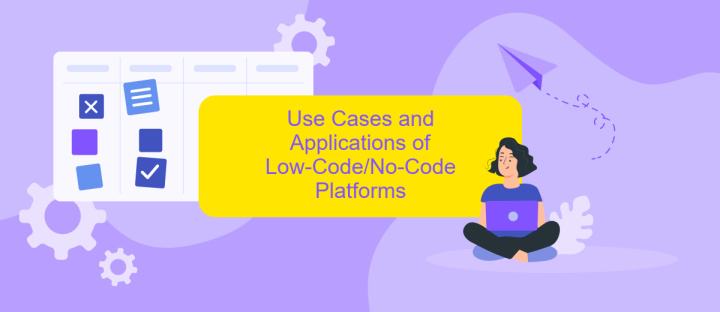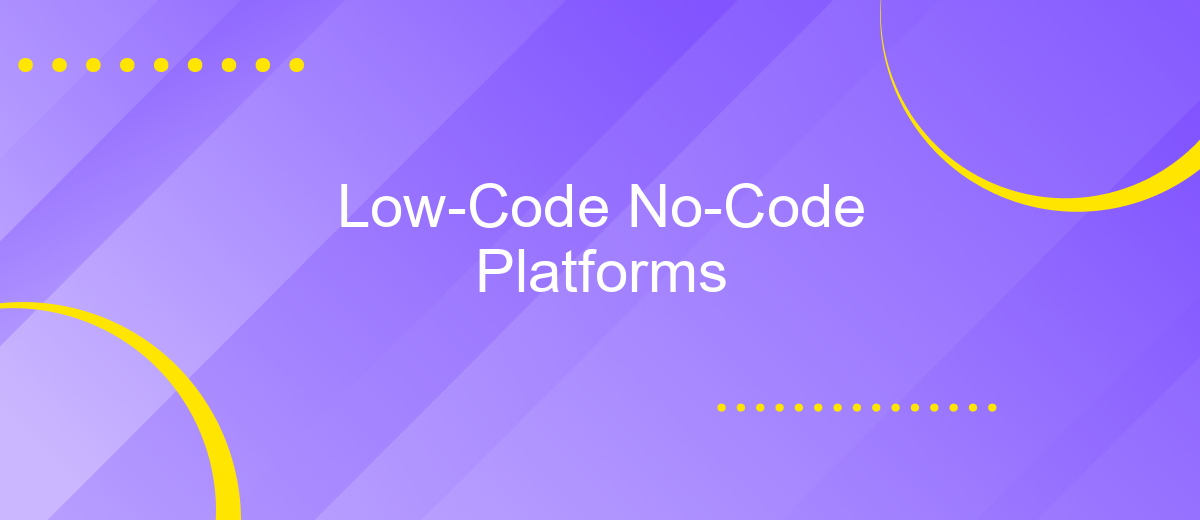Low-Code No-Code Platforms
Low-Code No-Code platforms are revolutionizing the way businesses develop software by enabling users to create applications with minimal or no coding experience. These platforms empower non-technical users to design, build, and deploy applications quickly, reducing development time and costs. This article explores the benefits, challenges, and future prospects of Low-Code No-Code platforms in the modern technological landscape.
Introduction to Low-Code/No-Code Platforms
Low-code and no-code platforms have revolutionized the way businesses develop applications by enabling users with minimal technical knowledge to create software solutions. These platforms provide a visual interface where users can drag and drop components to build applications, significantly reducing the time and effort required for development.
- Visual development environment
- Pre-built templates and components
- Integration capabilities
- Scalability and flexibility
One of the key features of low-code/no-code platforms is their ability to integrate with various services and APIs. Tools like ApiX-Drive simplify the process of connecting different applications, allowing users to automate workflows and data transfers without writing a single line of code. This integration capability enhances the functionality of the applications built on these platforms, making them more versatile and efficient.
Benefits and Features of Low-Code/No-Code Platforms

Low-code and no-code platforms offer significant benefits by enabling rapid application development without the need for extensive coding knowledge. These platforms empower businesses to quickly create and deploy applications, reducing time-to-market and lowering development costs. They also allow for greater flexibility and agility, as changes can be made easily without extensive reworking of code. This democratization of software development means that more team members, including those without technical backgrounds, can contribute to the creation and optimization of business processes.
Key features of low-code/no-code platforms include drag-and-drop interfaces, pre-built templates, and integration capabilities with other systems. For instance, services like ApiX-Drive facilitate seamless integration, allowing users to connect various applications and automate workflows effortlessly. This not only enhances productivity but also ensures that data flows smoothly across different platforms, improving overall operational efficiency. Furthermore, these platforms often come with robust security measures and scalability options, making them suitable for businesses of all sizes.
Use Cases and Applications of Low-Code/No-Code Platforms

Low-code and no-code platforms have revolutionized the way businesses develop applications, enabling rapid deployment and reducing the need for extensive coding expertise. These platforms are versatile and can be applied across various industries to solve a multitude of challenges.
- Business Process Automation: Automate repetitive tasks and streamline workflows to enhance productivity.
- Customer Relationship Management (CRM): Develop custom CRM solutions to manage customer interactions and data efficiently.
- Data Integration: Use platforms like ApiX-Drive to seamlessly integrate various applications and data sources, ensuring smooth data flow and synchronization.
- Mobile App Development: Quickly create and deploy mobile apps to meet specific business needs without extensive coding.
- Prototyping and MVPs: Build prototypes and minimum viable products swiftly to test ideas and gather user feedback.
These use cases demonstrate the flexibility and efficiency of low-code/no-code platforms in addressing diverse business needs. By leveraging these platforms, organizations can accelerate their digital transformation, reduce development costs, and empower non-technical users to contribute to application development.
Considerations and Challenges in Using Low-Code/No-Code Platforms

While Low-Code/No-Code platforms offer significant advantages, there are several considerations and challenges to keep in mind. These platforms can accelerate development and reduce costs, but they may also come with limitations that can impact long-term scalability and flexibility.
One key challenge is the potential for vendor lock-in, as applications built on specific platforms may be difficult to migrate to other systems. Additionally, while these platforms simplify development, they may not always provide the level of customization required for complex projects.
- Vendor lock-in risks
- Limited customization options
- Scalability concerns
- Security and compliance issues
Another important consideration is integration with existing systems. Platforms like ApiX-Drive can facilitate seamless integration, but it is crucial to ensure that all systems can communicate effectively. Lastly, while low-code/no-code solutions can empower non-developers, there is still a need for some technical oversight to ensure that best practices are followed and that the final product meets all necessary requirements.


Future Trends and Outlook for Low-Code/No-Code Platforms
The future of low-code/no-code platforms looks promising as businesses increasingly seek faster and more efficient ways to develop applications. These platforms are expected to integrate more advanced technologies such as artificial intelligence and machine learning to offer smarter automation and predictive analytics. Additionally, the rise of citizen developers—non-technical users who can build applications—will continue to drive the adoption of these platforms, making software development more accessible to a broader audience.
Integration capabilities will also see significant advancements. Services like ApiX-Drive, which facilitate seamless integration between various applications, will become increasingly important. These integrations will enable businesses to create more cohesive and efficient workflows without extensive coding knowledge. Furthermore, as companies continue to move towards digital transformation, the demand for agile and scalable low-code/no-code solutions will grow, solidifying their place in the future of software development.
FAQ
What is a Low-Code/No-Code platform?
Who can benefit from using Low-Code/No-Code platforms?
Can Low-Code/No-Code platforms handle complex business applications?
How do Low-Code/No-Code platforms integrate with existing systems?
Are Low-Code/No-Code platforms secure?
Apix-Drive will help optimize business processes, save you from a lot of routine tasks and unnecessary costs for automation, attracting additional specialists. Try setting up a free test connection with ApiX-Drive and see for yourself. Now you have to think about where to invest the freed time and money!

